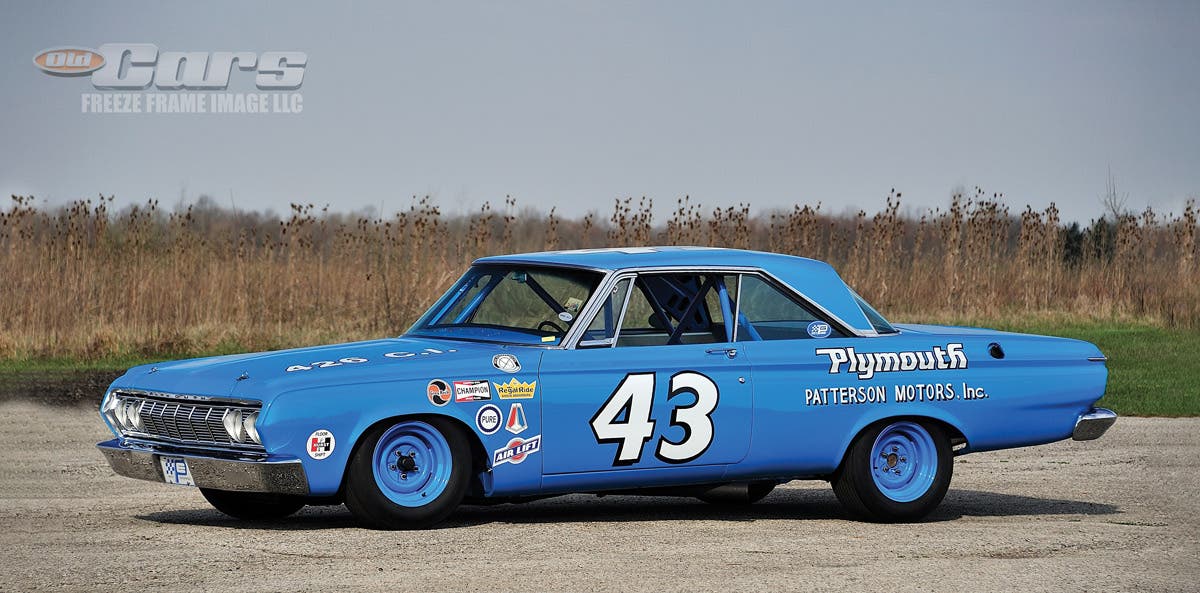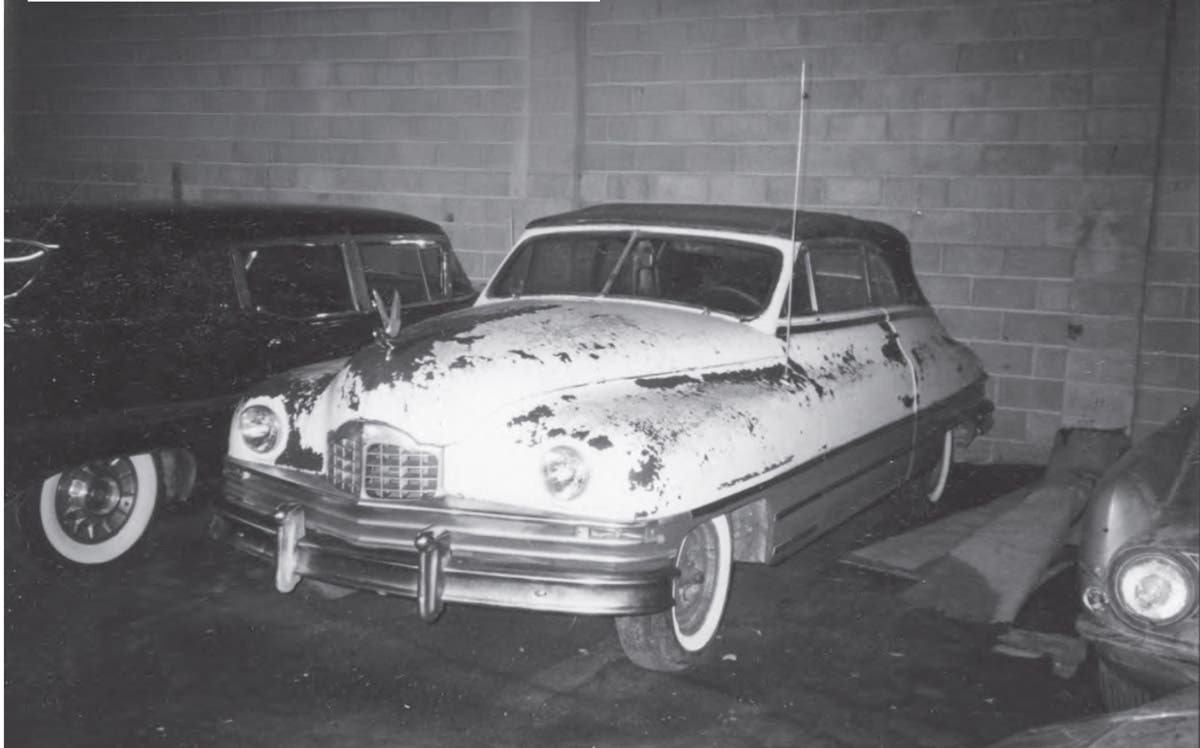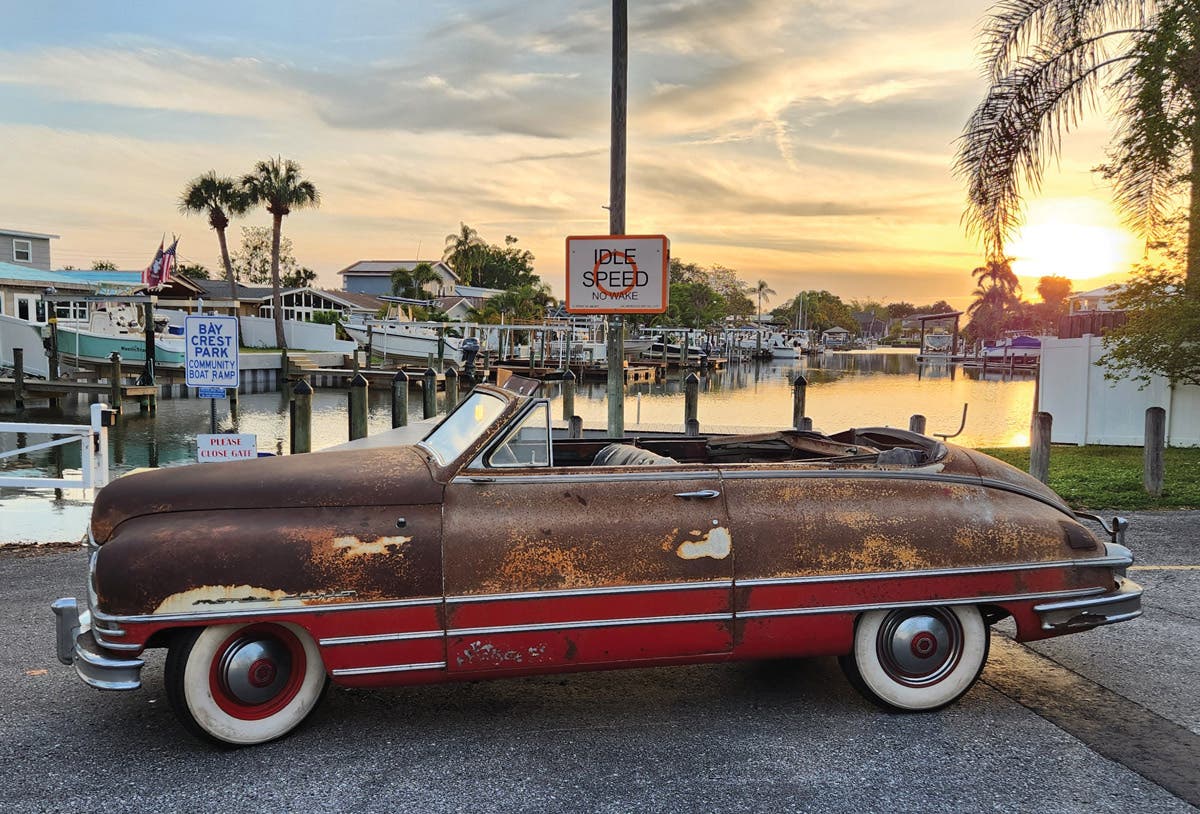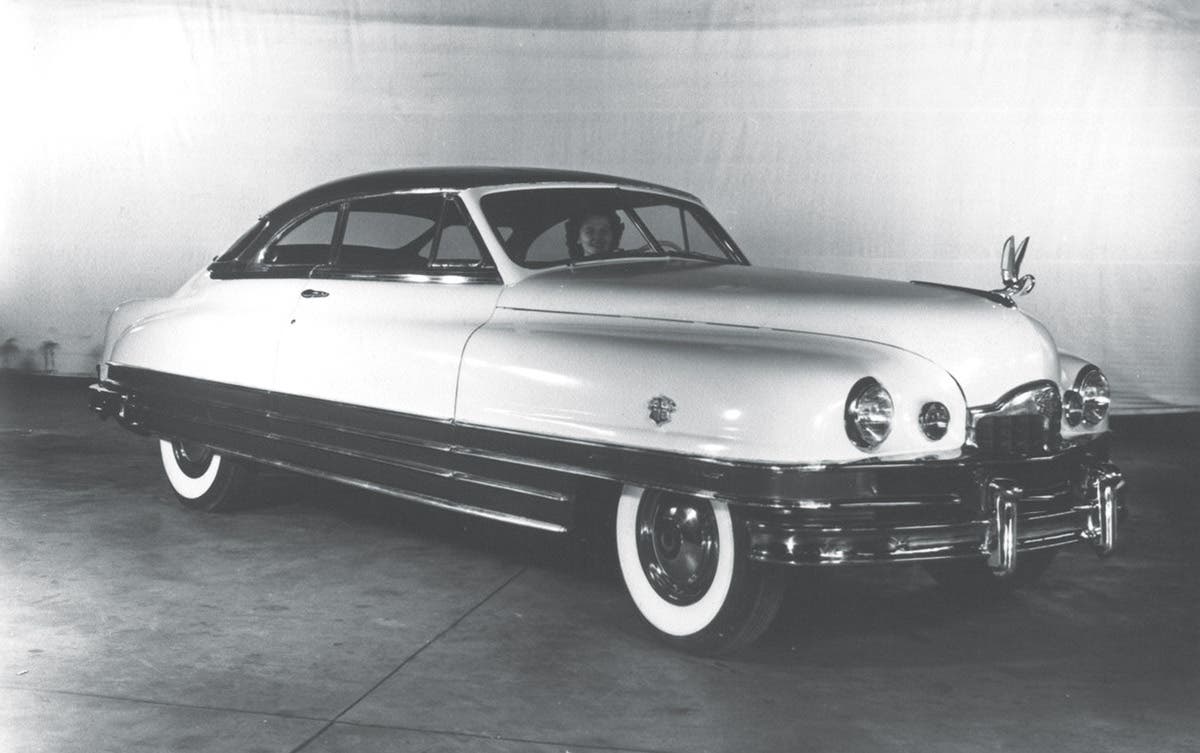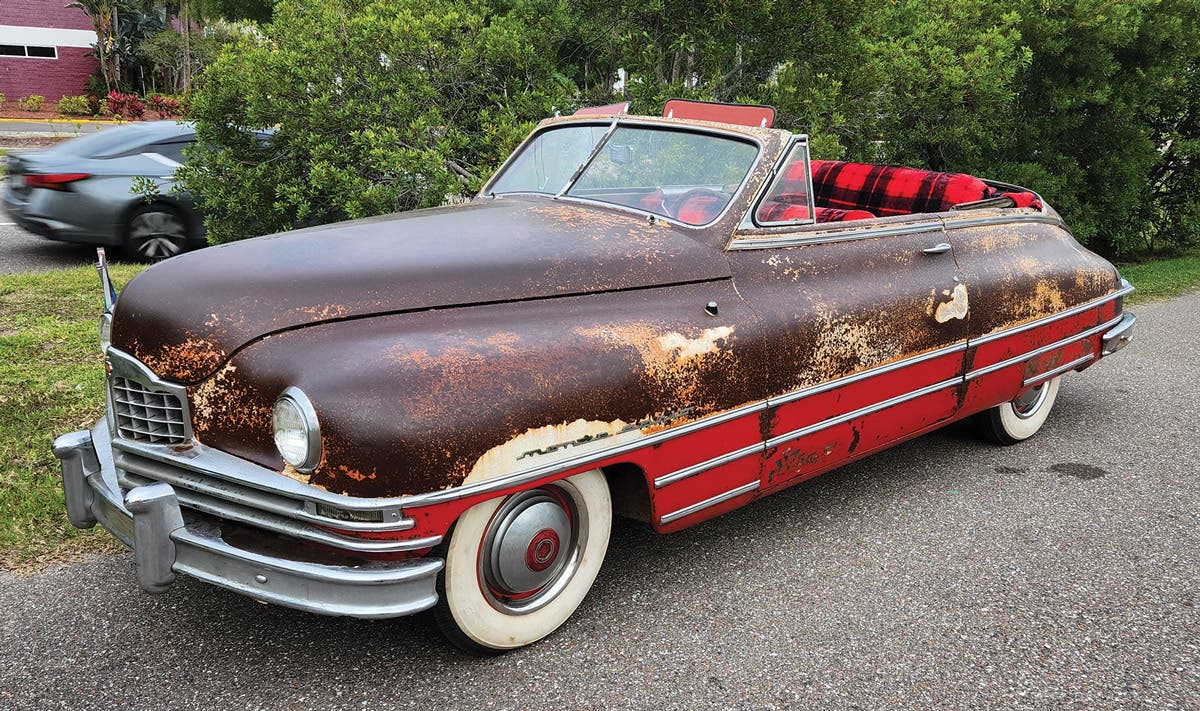Car of the Week: 1971 Dodge Challenger Indy 500 Festival car
Is this the last original-owner 1971 Dodge Challenger Indy festival car?
The infamous crash of the 1971 Dodge Challenger pace car into the photographer’s stand at that year’s Indianapolis 500 race didn’t sway Indiana native Mark Winzenread from wanting one of the matching Hemi Orange Challenger convertibles for himself.
“None of the ‘Big Three’ would step up to pace the race that year, and [Dodge dealer Eldon Palmer] organized the area Dodge dealers and they ordered 50 of these Challengers,” Winzenread says. “The truth was Eldon had been practicing where he had to stop the pace car all week and somebody moved the cones (the day of the race) and nobody told him. He came off the track too fast and locked it up. But they were saying the brakes were bad and Chrysler was rebating them $800.”
Winzenread was perfectly content driving his 1966 Plymouth Barracuda in that long ago summer of ’71. But then he spotted at McGinty Dodge of Indianapolis a pair of those Hemi Orange 1971 Challenger convertibles built for use during the Indy 500 and he couldn’t resist.
“I noticed these two pace cars on the showroom floor about a week after the race,” Winzenread says. “I talked my dad into going back there with me. I was 20—you had to be 21 to get a loan.”
The pace car that Palmer had crashed during the race and its backup were the only 383-cid V-8-powered Challengers built for use during the Indy 500, the rest being 318- or 340-cid V-8 cars. McGinty Dodge had one of each on its showroom floor.
“I wanted the 340, of course, and finally my dad said, ‘It’s the 318 or we’re going home,’ and I needed to go along with it, because I needed him for the financing,” Winzenread says.
“That loan surprised me. My two older brothers could destroy cars and it just broke his heart,” Winzenread says. “I didn’t think I would have a chance.”
The 318-powered Challenger at McGinty Dodge was well-optioned with power steering and a power top, radio, heater, the Torqueflite automatic with the Slap Stick gear selector and Rallye wheels. The Hemi Orange Challenger was built with a contrasting white interior and top like the actual pace car and the other cars built for race day.
The agreement that Winzenread made with his father was that he’d pay off the car in two years. Its sticker price was $4,257, and after the $800 rebate and his Barracuda trade-in, his loan came to $111 a month. It was a lot of money for a 20-year-old working at a grocery store, yet being single, Winzenread was comfortable with making the payments.
“I said, ‘I know I won’t be getting married for at least two years,’ and almost a year to the day, Linda and I got married.”
Despite being newlyweds, Winzenread and his wife were able to continue making the hefty payments each month, even through college. They never sold the car and today, they’re probably the only original owners of a Hemi Orange 1971 Challenger convertible built for support duty at the 1971 Indy 500 race.
“A guy was pestering me to buy it, and it was in pretty bad shape, and my wife is the one that told me, ‘You don’t want to sell that.’ I said, ‘I don’t know what I am going to do with it.’
By this time, the Challenger had become a spare car. Winzenread had used it as a daily driver until 1980, when he had finally tired of trying to drive the car during Indiana winters.
“I didn’t really plan to keep it, it was more of an accident that I did,” he says. “When I graduated from college to get my license to be a licensed CPA, I was running around to see clients. One day, I stopped at this four-way stop in this Challenger and I couldn’t get it going. It was like a pig on ice. Then this little old lady goes around me in a Plymouth Horizon and I thought, ‘Well, if I got to be out here fighting ice and snow, I got to get one. So I got a Plymouth Horizon 2+2, a great little car, and just parked the Challenger and it sat that way for several years.”
By 1988, Winzenread figured it was time to restore the now-forlorn Challenger and pulled it out of his garage for some restoration work.
“When the kids came along, I decided I had to have something to do when they were playing in the yard, so I took it apart and took it to a little body shop in the town I live,” Winzenread says. “The guy gave me an estimate for $2,700 to do the body work and repaint it. I already had the replacement rear quarters, and he said it would take about two weeks. Well, two weeks became six months and I got nervous. I drove by the body shop and they had it up on sawhorses and this kid, he couldn’t have been more that 20 years old, he’s drilling these little holes (where he found rust holes) and he’s soldering them with lead and I am thinking, ‘I didn’t pay for this level of restoration.’”
Winzenread had planned to reassemble the Challenger after the body shop painted it, and one bright, sunny day the following April, he received the call that the car was done. When he arrived to pick up the Challenger, he braced himself for a hefty bill.
“They are all standing around it, and I can see these guys are proud of their work,” Winzenread recalled. “[The owner] said, ‘You happened to come along when the guys were tired of insurance work and they wanted something to sink their teeth into. We’ll stick to that $2,700 estimate, but see that Mustang? The owner is going to pay $7,600 for what we did to your car for $2,700.”
After he had the Challenger home, Winzenread began reassembling it and then slowly tackled other aspects of its restoration.
“Every year I would do something to it,” Winzenread says. “One year, it was an all-new Legendary interior. Another year, I sent the dash and door panels to Just Dashes. The hardest part was replacing the dash in July. There are 11 bolts in there, and it’s hot and I am trying to get these 11 bolts out. I think that was the toughest thing.”
About three years ago, Winzenread finally had the original two-barrel 318-cid V-8 rebuilt, and in the process, he had a four-barrel intake and carburetor installed, as well as dual exhaust. The original 318 also received a high-lift cam and electronic ignition.
“The guy that did it, he had been wanting to get his hands on that car for a long time,” Winzenread says. “He builds race engines and said, ‘Do you want it to rumble or roar?’ I said, ‘A rumble would be nice. My wife won’t want it to roar—she’d kill me.’”
The Challenger currently has about 115,000 miles on the odometer, and Winzenread says he’s still not rebuilt its original Torqueflite automatic transmission. Despite the abuses to it with a young driver behind the wheel, Winzenread says the transmission shows no signs of its miles or its age.
“Shortly after I had that car, about a month later, you could go along and drop the transmission into first and punch it and it would stand up on all four wheels and take off. Well, I hadn’t read the owner’s manual on the Slap Stick and I [accidentally] put that thing into ‘Park’ going 70 mph and the thing started rabbit-hopping down the road. I pulled it out [of ‘Park’] and very carefully drove it home. That car has 115,000 miles on it and I finally had the transmission oil changed, but I had never had it changed. That transmission looked as good on the inside as it did when it was new. It was spotless.”
These days, Winzenread goes a little easier on the Challenger than he did in his youth. It’s no longer charged with trips to the office, but rather jaunts to local car shows where Winzenread has to continue fending off hopeful buyers.
“I had taken the car to the Goodyear store to get new tires that I had special ordered,” Winzenread says. “The day before, I had my wife follow me down to drop it off, and I told the tire dealer, ‘As soon as this car is ready, call me—I don’t want it sitting out. When I picked it up, he said, ‘Get that damn thing out of here. Ever since it has shown up, all the guys want to do is talk muscle cars, and I have a guy coming by with a purchase offer.”
Winzenread turned down that offer, of course, and instead, he now throws out a price that he figures is ridiculous enough to scare away all comers. His hope for his Challenger Indy 500 festival car is that it ultimately stays in the Indianapolis area, and in the family. His son currently owns a 2022 Dodge Challenger R/T, and the first-generation Challenger convertible stands tall with the younger-generation coupe.
“What I will probably end up doing is willing it to my son,” Winzenread says. “He keeps assuming he’s going to get it anyway!”
Love MoPars? Here are a few more articles for your reading enjoyment.
SHOW US YOUR WHEELS!
If you’ve got an old car you love, we want to hear about it. Email us at oldcars@aimmedia.com
Ever wonder what your classic ride is worth? Old Cars Price Guide is now online! Check it out and join to get the unbiased and real-world pricing on classic cars. You get pricing anytime, anyplace on your phone, tablet or computer.
Angelo Van Bogart is the editor of Old Cars magazine and wrote the column "Hot Wheels Hunting" for Toy Cars & Models magazine for several years. He has authored several books including "Hot Wheels 40 Years," "Hot Wheels Classics: The Redline Era" and "Cadillac: 100 Years of Innovation." His 2023 book "Inside the Duesenberg SSJ" is his latest. He can be reached at avanbogart@aimmedia.com



